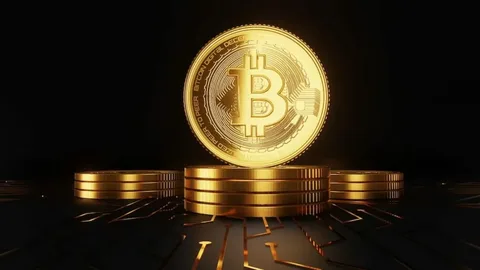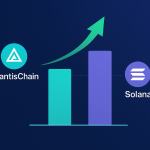Crypto Finance
Filipinos Invest ₱6 Trillion In Crypto: Unraveling The Massive Surge In Digital Asset Investments

Introduction
The cryptocurrency market in the Philippines has witnessed an unprecedented boom, with reports revealing that Filipinos have invested a staggering ₱6 trillion into digital assets. This massive influx of capital signifies the country’s growing confidence in cryptocurrencies as a viable investment and financial instrument. From Bitcoin and Ethereum to emerging altcoins and decentralized finance (DeFi) projects, Filipinos are embracing digital assets at an accelerating pace.
But what is fueling this dramatic rise in crypto investments? Is it simply speculative enthusiasm, or are there deeper economic, social, and technological factors driving this trend? In this comprehensive analysis, we explore the reasons behind the surge, the risks involved, government regulations, and what the future holds for the Philippines’ crypto industry.
The Explosive Growth Of Crypto In The Philippines
Cryptocurrencies have gained immense popularity in the Philippines, with the country emerging as one of the leading digital asset adopters in Southeast Asia. This phenomenon can be attributed to several factors:
Growing Interest in Digital Assets
In recent years, cryptocurrencies have gained mainstream attention, with Filipinos actively exploring digital assets as alternative investment vehicles. Many young and tech-savvy investors have entered the crypto space, seeking to capitalize on its potential for high returns.
Rise of Play-to-Earn (P2E) Gaming
The Philippines became a global hotspot for play-to-earn (P2E) games like Axie Infinity, which allowed players to earn real money through blockchain-based gaming. Many Filipinos turned to P2E gaming as a source of income, especially during the COVID-19 pandemic, leading to increased awareness and adoption of cryptocurrencies.
High Remittance Costs and Crypto as a Solution
With millions of Filipinos working overseas and sending remittances back home, the country has one of the highest remittance inflows in the world. Traditional remittance services charge high fees, whereas cryptocurrencies provide a faster, cheaper, and more accessible alternative for cross-border transactions. This has led many Filipinos to turn to stablecoins and digital assets for money transfers.
Financial Inclusion and the Unbanked Population
According to Bangko Sentral ng Pilipinas (BSP), over 50% of Filipinos remain unbanked—meaning they lack access to traditional financial services. Cryptocurrencies offer a decentralized alternative, allowing individuals to store, transfer, and invest money without needing a bank account.
Economic Uncertainty and Inflation Hedge
The Philippines has experienced economic fluctuations, with inflation rates affecting the value of the peso. Cryptocurrencies, especially Bitcoin, are increasingly seen as a hedge against inflation, prompting many to convert their savings into digital assets.
Where Is The ₱6 Trillion Invested?
The ₱6 trillion in crypto investments by Filipinos is distributed across various digital asset classes, including:
1. Bitcoin (BTC) and Ethereum (ETH)
Bitcoin and Ethereum remain the dominant cryptocurrencies in the Philippines. Many investors see Bitcoin as “digital gold,” while Ethereum’s smart contract capabilities make it an attractive investment for decentralized applications (dApps) and DeFi projects.
2. Altcoins and Emerging Tokens
Many Filipinos are diversifying their portfolios by investing in altcoins such as Binance Coin (BNB), Solana (SOL), Cardano (ADA), and Polygon (MATIC). These assets offer alternative investment opportunities with different use cases in blockchain technology.
3. Decentralized Finance (DeFi) Investments
DeFi platforms like Uniswap, Aave, and Compound allow users to earn interest, lend, and borrow crypto assets without intermediaries. Filipino investors are increasingly participating in DeFi protocols to maximize returns.
4. Non-Fungible Tokens (NFTs) and Metaverse Projects
The rise of NFTs has also captured Filipino interest, with many investing in digital art, collectibles, and metaverse land on platforms like OpenSea, The Sandbox, and Decentraland.
Risks And Challenges Of Crypto Investments In The Philippines
While the ₱6 trillion crypto investment highlights the country’s strong interest in digital assets, it is not without risks. Investors must navigate various challenges, including:
Market Volatility
Cryptocurrencies are highly volatile, with prices experiencing dramatic fluctuations. While some investors have made substantial profits, others have faced significant losses.
Scams and Fraudulent Schemes
The crypto industry has seen a rise in scams, Ponzi schemes, and fraudulent investment platforms. The lack of regulatory oversight has led to cases where unsuspecting investors lost their money to fake projects.
Regulatory Uncertainty
The Philippine government and financial regulators, including the Securities and Exchange Commission (SEC) and Bangko Sentral ng Pilipinas (BSP), are still formulating clear regulations for crypto assets. While some measures have been introduced, the regulatory landscape remains uncertain.
Cybersecurity Threats
With the rise of crypto adoption, cyberattacks, hacking incidents, and phishing scams have also increased. Filipino investors must be cautious and ensure they store their assets securely using hardware wallets and trusted exchanges.
Government Regulations And The Future Of Crypto In The Philippines
The Philippine government has taken steps to regulate cryptocurrencies while encouraging innovation. Some key regulatory measures include:
Bangko Sentral ng Pilipinas (BSP) Licensing: Crypto exchanges must obtain Virtual Asset Service Provider (VASP) licenses to operate legally in the country.
Taxation Policies: Authorities are working on taxing crypto transactions, although specifics are still under discussion.
SEC Warnings: The SEC regularly issues warnings about unregistered crypto platforms and Ponzi schemes to protect investors.
Moving forward, the Philippines is expected to continue its pro-crypto stance, balancing regulation with innovation to ensure investor protection and financial inclusion.
Conclusion
The ₱6 trillion investment into crypto by Filipinos is a testament to the country’s growing enthusiasm for digital assets. As financial inclusion, remittance solutions, and economic concerns drive more individuals into the crypto space, the market is poised for continued expansion.
However, with great opportunities come significant risks. Filipino investors must exercise caution, conduct thorough research, and stay informed about market trends and regulations. If managed properly, the Philippines could emerge as a leading player in the global crypto industry, shaping the future of finance in Southeast Asia.










